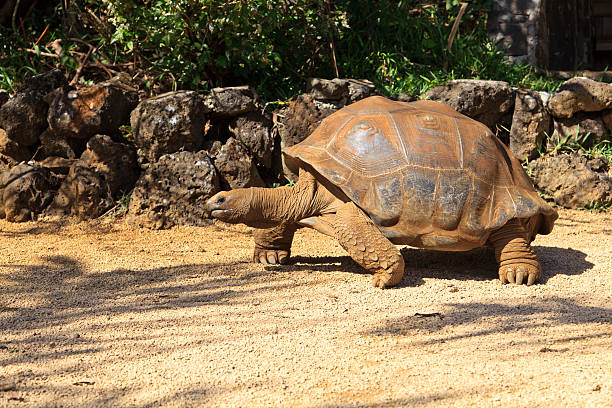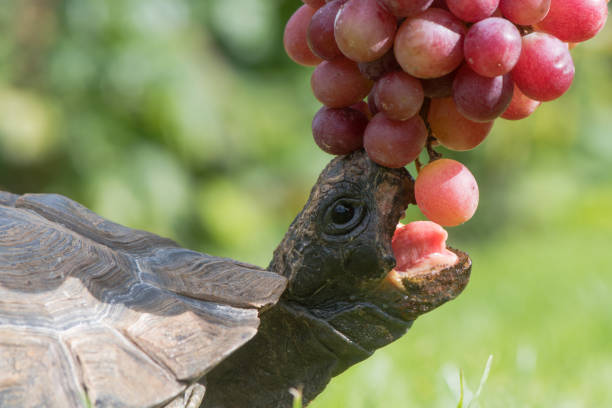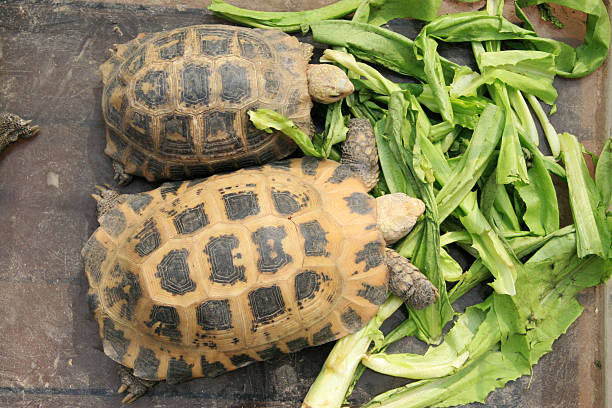Red-Footed Tortoise Diet
Red-footed tortoises are opportunistic grazers of grasses, weeds and leafy greens. They need a stable diet of 60% dark leafy vegetables, 15% fruits and 10% appropriate tortoise pellets and animal proteins.
When feeding fruit, place it on a slate so they must bite into the food. This helps to keep their beaks at a normal length.
Feeding Schedule
Red-footed tortoises are opportunistic feeders and can eat just about anything. However, the ideal diet for these herbivorous reptiles is high-calcium dark leafy greens, fruits and flowers with a small amount of animal protein.
To keep the greens in your tortoise’s tank fresh, rotate a variety of them throughout the week. Suitable greens include collard, mustard and dandelion greens, turnip tops, kale, chard, endive, watercress, escarole, Swiss chard, parsley and arugula. Avoid pale greens such as iceberg lettuce and celery tops.
The opportunistic nature of these tortoises means that they are likely to devour all the food you put in front of them, so limit your feedings to what they can finish in about 15 minutes. This helps prevent overfeeding and pyramiding.

During the day, mist your tortoise’s tank to stimulate a feeding response. Fruit can also be offered as a treat, but should make up no more than 15% of the overall diet. Fruits that are good for this tortoise include bananas, apples and berries, melon, kiwi and figs. Hibiscus flowers and hibiscus leaves are also great treats.
Vegetables
Unlike the more rugged African savannah species, Red-footed tortoises are attracted to broad leafy plants and are opportunistic grazers of grasses and weeds. A stable diet of 60% dark leafy greens and weeds, 15% fruits and 25% vegetables (including appropriate pelleted foods like Mazuri tortoise food or ZooMed forest tortoise food) should be fed.
During the summer, when temperatures are warmest and humidity is highest, the Red-footed tortoise can maintain a warmer body temperature through digestion of high sugar and carbohydrate fruits and flowers. This makes watermelon, papaya, guava, pineapple and cantaloupe ideal fruits for your pet tortoise.
Figs are also excellent because of their 2:1 Calcium to Phosphorus ratio. They are also very high in carotenoids and polyphenols, including quercetin, kaempferol, gallic acid and catechins.
Fruits
Red-footed tortoises are omnivorous in the wild, eating a variety of fruits, greens, flowers and plants. They also consume a small amount of animal material such as carrion and pre-killed rodents. In captivity, it is advisable to offer a diet that mimics as much of their natural environment as possible.
Fruit should make up a maximum of 15% of the overall tortoise diet, with papaya, kiwi, melon and figs being ideal. Avoid citrus and overly watery fruits.

Papayas are high in both beta carotene and lutein, a powerful anti-oxidant that aids in vision, bone growth and reproduction. They are also high in polyphenols (quercetin, kaempferol and gallic acid). They have an excellent (3:1) calcium to phosphorus ratio.
Often these are sold in the produce section of supermarkets and are easily accessible. They are high in both Vitamin A and C. Ideally this should be offered alongside a low fat dry cat food mix that has been crumbled and mixed with the fruit to encourage biting and chewing. This also helps to file their beaks into a normal shape.
Animal Proteins
Red-footed tortoises are opportunistic grazers and will consume a wide variety of grasses and weeds in the wild. They also eat a variety of vegetables and fruits, flowers, and some animal proteins. In captivity, a stable diet should consist of a mixture of appropriate high calcium greens, fruits, vegetables and small amounts of animal protein.
Experts recommend using cooked meats to provide your tortoise with protein, rather than raw or undercooked meats. Raw meat can contain harmful bacteria and parasites that can cause digestive problems in tortoises. Also, processed meats like bacon, ham and sausage can contain salt, nitrates and other additives that are unhealthy for tortoises.

The amount of protein fed to your tortoise should be limited, as too much can lead to gastrointestinal issues and obesity in reptiles. It is important to consult a veterinarian or reptile nutrition expert to determine the appropriate amount of protein for your tortoise’s diet. Ideally, you should use only lean cuts of meat that are free of additives and prepared in bite-sized pieces to avoid choking hazards.
Supplements
Red-footed tortoises are able to thrive on a mostly vegetarian diet but many keepers find that animal protein is beneficial. A few small items of fish, hard boiled eggs, meal worms, lean ground turkey and even some pre-killed rodent can be offered on occasion to provide dietary diversity. Avoid feeding high amounts of grain based foods as these are typically high in phytate which binds to iron, zinc and manganese and slows their absorption.
It is also helpful to add a variety of other substrates like orchid bark, cypress mulch and peat moss/additive-free top soil mixtures to offer enrichment and a higher humidity level. Rocks, drift wood and plants (potted or faux) are also great additions to a tortoise’s enclosure for additional enrichment.
Supplements should be sprinkled on the food two to three times a week for adults and daily for juveniles. A reptile multivitamin powder is often recommended. This will provide necessary vitamins and minerals, including a good Calcium:Phosphorus ratio and Vitamin D3. A powder with a lower pH is preferred as it will not rot the food.
